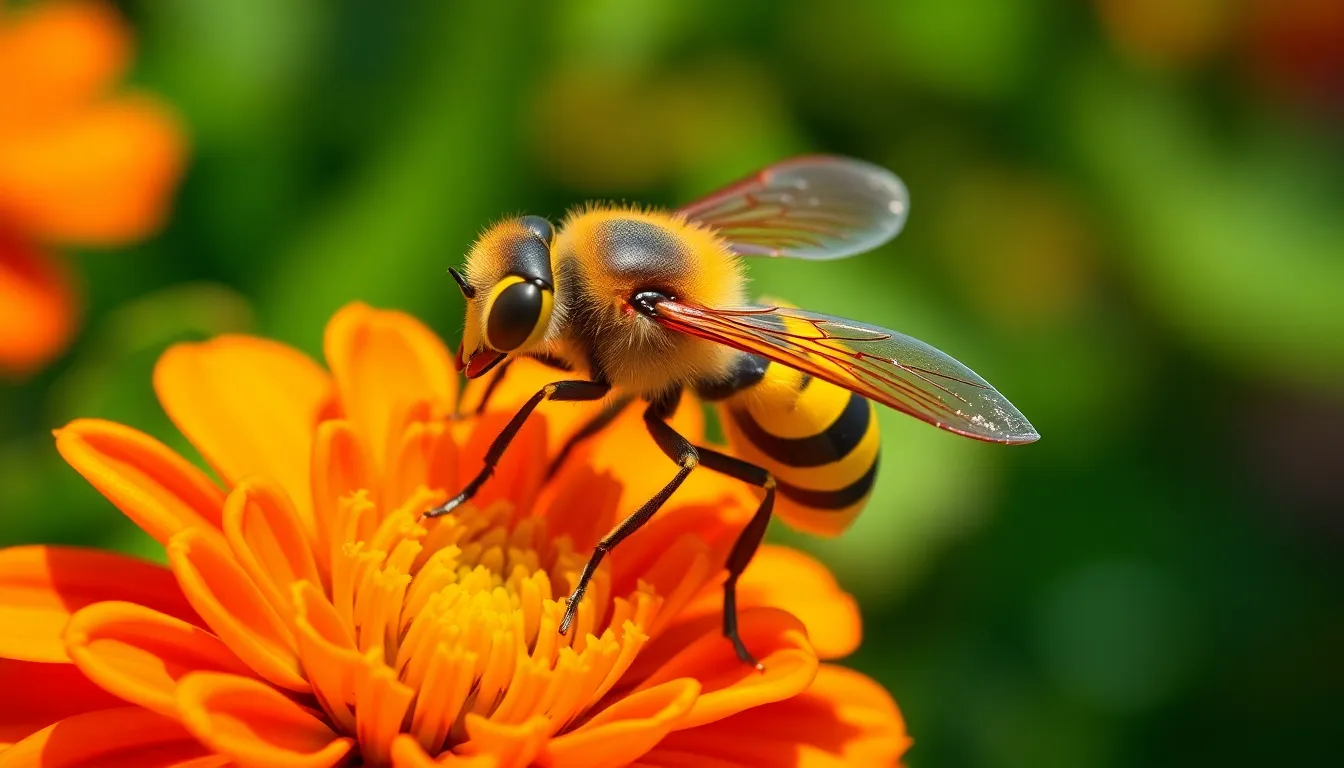Table of Contents
ToggleAs dusk settles and the world quiets down, many wonder about the nighttime habits of some of nature’s most notorious insects: wasps. Known for their aggressive behavior and painful stings, these creatures are often associated with daytime activity. But do they really rest when the sun goes down?
Understanding wasp behavior at night can help people navigate outdoor activities with greater confidence. While some insects are strictly nocturnal, wasps tend to be less active after dark. However, certain species may still pose a threat, especially in warmer climates. Exploring their habits can shed light on when it’s safest to enjoy the outdoors without the worry of an unexpected encounter.
Understanding Wasps
Wasps belong to the order Hymenoptera, which includes bees and ants. These insects play vital roles in ecosystems, such as pollination and controlling pest populations. Wasps exhibit various behaviors based on their species, including construction of nests from paper-like materials and hunting small insects for food.
Most wasps display diurnal activity patterns. They generally emerge during daylight hours, seeking nourishment from nectar and other food sources. Species like the yellow jacket and paper wasp are often seen during warm months, foraging and defending their nests aggressively.
In contrast, nocturnal wasp species, such as some types of hornets, exhibit different behaviors. These wasps can sometimes be found active at night, primarily in warmer regions. Though less common, their nocturnal activity can pose risks, particularly if they feel threatened.
When engaging in outdoor activities, individuals should remain cautious. Understanding wasp behavior aids in identifying the best times to minimize encounters. Awareness of specific wasp activity allows for safer enjoyment of outdoor spaces.
Activity Patterns of Wasps

Wasps display distinct activity patterns primarily influenced by their species. Most wasps exhibit diurnal behavior, but some species may be active at night.
Diurnal Behavior
Wasps predominantly follow diurnal behavior, meaning they are active during daylight hours. These wasps typically emerge at sunrise to forage for food and gather resources. Common foraging activities include hunting insects, collecting nectar, and gathering plant materials for nest construction. Species such as yellow jackets and paper wasps are known for their daytime activity, often seen around picnic areas or flowering plants.
Nocturnal Behavior
Nocturnal behavior occurs in certain wasp species, primarily in warmer climates. These wasps become active at night, often searching for food or defending their nests under the cover of darkness. Notable examples are some hornet species, which may pose threats during evening outdoor activities. Individuals spending time outdoors at night should remain vigilant, as decreased visibility increases encounters with these nocturnal wasps. Awareness of potential nighttime activity can help reduce risks.
Factors Influencing Activity
Environmental conditions and species variations play key roles in wasp activity, particularly at night. Understanding these factors helps in anticipating wasp behavior during outdoor events.
Environmental Conditions
Temperature, humidity, and light exposure significantly influence wasp activity. Higher temperatures and humidity levels often extend activity periods. Wasps may forage for food or patrol nests during warmer nights. Conversely, colder temperatures reduce their movement, leading to decreased activity levels.
Light exposure impacts nocturnal behavior. Some species, like certain hornets, respond to artificial light, which may draw them out. Areas with ambient lighting, such as patios and campgrounds, can attract wasps, increasing the likelihood of encounters.
Species Variations
Species variations also determine nighttime activity levels. Most wasps demonstrate diurnal habits, while specific species exhibit nocturnal tendencies. For example, some yellow jackets might remain active later into the evening. Meanwhile, species like paper wasps generally retreat to their nests as night approaches.
Certain hornets, such as the Eastern and European hornets, actively hunt for food at night, increasing risks for outdoor enthusiasts. Recognizing these species helps in making informed decisions about when and where to engage in outdoor activities.
Are Wasps Active at Night?
Wasps are primarily diurnal, yet some may still display nocturnal activity. Understanding their behaviors and common misconceptions helps outdoor enthusiasts navigate potential encounters.
Common Misconceptions
Many believe wasps are completely inactive at night. This perception overlooks the fact that certain species exhibit heightened activity during evening hours. Misunderstandings arise from observing common wasp behavior, as most populations rest in their nests overnight. However, species like yellow jackets and hornets can engage in foraging or nest defense once darkness falls. Recognizing these nuances aids in risk assessment for outdoor activities.
Instances of Nocturnal Activity
Some wasp species do exhibit nocturnal behavior. Notable examples include:
- Certain Hornets: Species such as the Asian giant hornet actively hunt at night, increasing the risk of encounters during evening events.
- Yellow Jackets: While typically diurnal, yellow jackets may remain active later into the evening, especially in warmer climates.
- Attraction to Light: Nocturnal wasps often gravitate toward artificial light sources, making well-lit areas potential hotspots for encounters.
Environmental conditions, such as humidity and temperature, further influence these behaviors, with warmer nights generally prompting increased activity. Understanding these factors enables safer outdoor engagement during evening hours.
Wasps may not be as active at night as they are during the day but certain species can still pose a risk after dark. Understanding the behavior of these insects is crucial for anyone engaging in outdoor activities. While most wasps are diurnal some like hornets and yellow jackets can be active later in the evening.
Awareness of environmental factors such as temperature and light can further guide outdoor enthusiasts in making safer choices. By recognizing the nuances in wasp activity people can enjoy their time outdoors with greater confidence while minimizing the chances of unwanted encounters.








